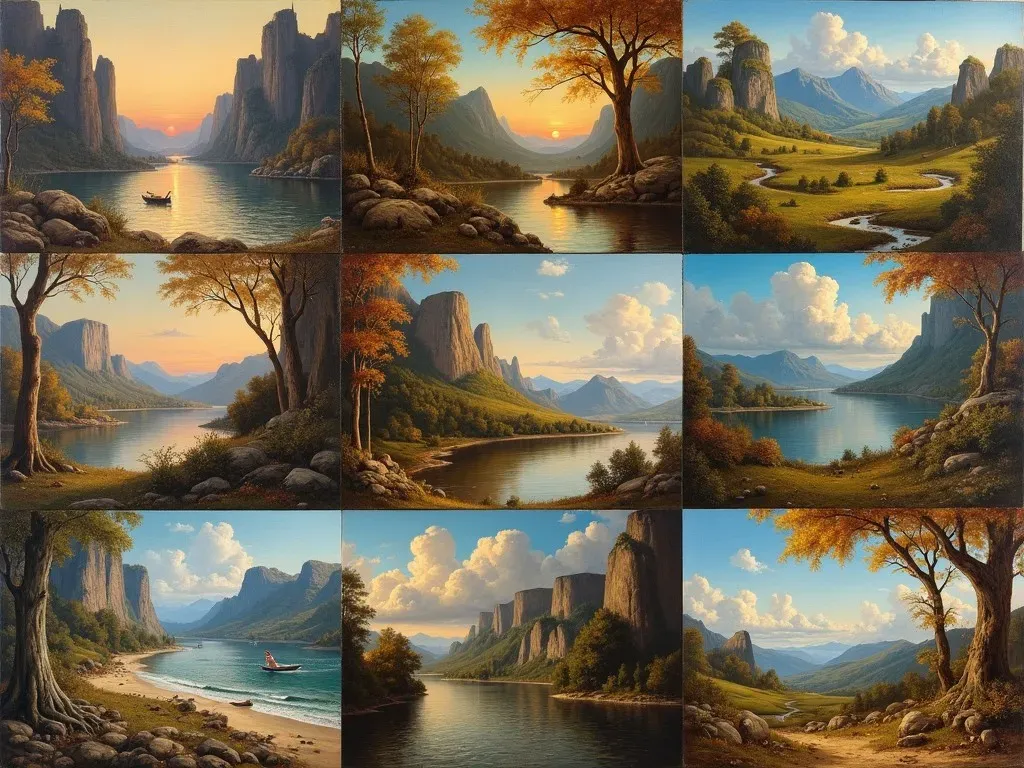Oil paintings are revered throughout the art world for their unique textures, vibrant colors, and impressive Techniques employed by the famous painters throughout history. Some of the most renowned artworks ever created have been realized in oil paint, inviting admiration and study from generations of art lovers. This article delves into the realm of oil painting – exploring famous oil painters, their signature techniques, and notable masterpieces that have shaped art history.
1. Notable Oil Painters and Their Masterpieces
Leonardo da Vinci
-
Mona Lisa
- Year Painted: 1503–1504
- Medium: Oil on Poplar Panel
- Dimensions: 77 cm × 53 cm
- Current Location: Louvre, Paris
Leonardo da Vinci is an iconic figure of the Renaissance and arguably the most influential painter in Western history. His most famous work, the "Mona Lisa," is celebrated for its captivating subject and innovative techniques.
Vincent van Gogh
-
The Starry Night
- Year Painted: 1889
- Medium: Oil on Canvas
- Dimensions: 73.7 cm × 92.1 cm
- Current Location: Museum of Modern Art, New York
Vincent van Gogh’s "The Starry Night" is another famous oil painting, renowned for its swirling skies and vibrant colors, depicting the view from his asylum room in Saint-Rémy-de-Provence, France.
claude monet
-
Impression, Sunrise
- Year Painted: 1872
- Medium: Oil on Canvas
- Dimensions: 48 cm × 63 cm
- Current Location: Musée Marmottan Monet, Paris
Monet, the founder of Impressionism, captured fleeting moments of light and color in his landscapes. His painting "Impression, Sunrise" is credited with giving the Impressionist movement its name.
Pablo Picasso
-
Les Demoiselles d’Avignon
- Year Painted: 1907
- Medium: Oil on Canvas
- Dimensions: 243.9 cm × 233.7 cm
- Current Location: Museum of Modern Art, New York
Pablo Picasso is one of the most famous artists of the 20th century. His radical approach in "Les Demoiselles d’Avignon" paved the way for Cubism, breaking traditional aesthetics and redefining modern art.
2. Key Characteristics of Oil Painting
Oil painting involves the use of pigments mixed with oils, typically linseed oil. This technique allows for:
- Rich Color Depth: The translucent quality of oil paint permits greater depth of color through layering.
- Versatility: Oil paint can be applied thinly (glazing) for a luminous effect or thickly (impasto) for texture.
- Long Drying Times: The extended drying time allows artists to work at their own pace, blend colors seamlessly, and correct mistakes.
| Characteristic | Description |
|---|---|
| Color Depth | Translucent layering for rich colors |
| Versatility | Glazing and impasto techniques available |
| Drying Time | Allows for blending and corrections |
3. Prominent oil painting techniques
3.1 Glazing
A technique involving the application of thin, transparent layers of paint that can create luminous effects and enhance the depth of colors.
3.2 Impasto
This method involves applying thick layers of paint, allowing for texture and three-dimensional quality on the canvas.
3.3 Scumbling
A technique where a layer of opaque or semi-opaque paint is applied over a dried layer, allowing the underpainting to show through.
4. Famous Works of Art and Their Impact
Here’s a list of some of the most famous oil paintings, their creators, and their significance in the art world.
| Painting | Artist | Year | Significance |
|---|---|---|---|
| The Last Supper | Leonardo da Vinci | 1495 | Masterpiece of perspective and composition |
| The Girl with a Pearl Earring | Johannes Vermeer | 1665 | Celebrated for light, texture, and emotion |
| American Gothic | Grant Wood | 1930 | Iconic representation of rural American life |
| The Persistence of Memory | Salvador Dalí | 1931 | Surrealist interpretation of time and consciousness |
| The Kiss | Gustav Klimt | 1907 | Showcases harmony and intimacy through pattern |
5. Understanding Famous Artists and Their Contributions
5.1 Early Masters
Artists like Jan van Eyck and Titian were among the first to master oil painting techniques, laying foundational principles for future generations.
5.2 The Renaissance and Baroque Periods
Artists such as Caravaggio and Rembrandt changed the course of oil painting through their dramatic use of light and shadow, leading to the development of tenebrism.
5.3 Modern Movements
Movements such as Impressionism and Expressionism revolutionized oil painting with innovative approaches to color, form, and abstraction.
FAQs About Famous Oil Painters
Q1: Why is oil painting so popular?
A1: Oil painting allows for deeper exploration of color and texture, which leads to striking and versatile artworks.
Q2: Who are some other famous oil painters?
A2: Other notable oil painters include Jackson Pollock, Edvard Munch, and Georgia O’Keeffe.
Q3: What are the best-known techniques used in oil painting?
A3: The best-known techniques include glazing, impasto, and scumbling, each providing unique visual effects.
Q4: Where can I see famous oil paintings?
A4: Many famous oil paintings are displayed in prestigious museums, such as The Louvre, Museum of Modern Art, and The National Gallery.
For more information about historical oil paintings and their creators, check out Art Ignition for an exhaustive exploration of this art form.
